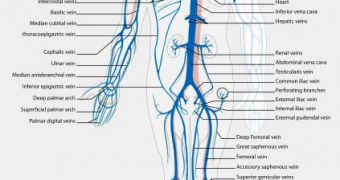The strife in medicine today is to push science to a level advanced enough to produce replacement bones, tissues, skin and other organs from various types of stem cells. While this is definitely a possibility, work in this field is hindered by the fact that growing a kidney in a bioreactor, for instance, is kind of pointless if it does not have blood vessels inside it to feed its cells with nutrients, and carry away the wastes. And, while building the blood vessels may seem like the easiest part, it has, in fact, proven to be extremely difficult to create accurate replicas of the actual circulatory system.
In an effort to tackle this problem, the US National Institutes of Health (NIH) launched an open invitation to the scientific community, to create plans that would lead to the most easy way of obtaining such structures. As an incentive, the agency provided stimulus money received from the federal government. Once such “Challenge Grant,” worth in excess of $1 million, was recently awarded to the Case Western Reserve University (CWRU). Researchers here proposed combining custom-designed synthetic molecules with a variety of stem cells that was best suited for the job.
CWRU professors of biomedical engineering Roger Marchant and Horst von Recum are the leaders of the research team at the university. They reveal that the method is already being tried out in a mouse, with the ultimate goal being the creation of blood-vessel networks that would grow and then sustain themselves in very much the same way their human “cousins” do. “We're bringing together unique skills that alone wouldn't address the problem,” Marchant says.
“In the body, our tissues are constantly regenerating and remodeling. Osteoporosis is an example of what can go wrong: the cells that break down bone are working faster than cells that rebuild bone. A synthetic scaffold can't regenerate and remodel, but we can introduce new DNA in the stem cells so they can remodel the scaffolding, break down pieces of scaffolding in the way,” von Recum adds.
The researchers say that their study has already moved to the realm of three dimensions. They plan to build artificial scaffolds to mimic the blood-vessel networks, and then to seed the scaffolds with stem cells. “We're no longer working in two dimensions. We have to come up with techniques to build in three dimensions,” Marchant reveals. The team will then devise a technique that will allow for the separation between needed cells and unwanted ones, as both types result from differentiated stem cells.

 14 DAY TRIAL //
14 DAY TRIAL //